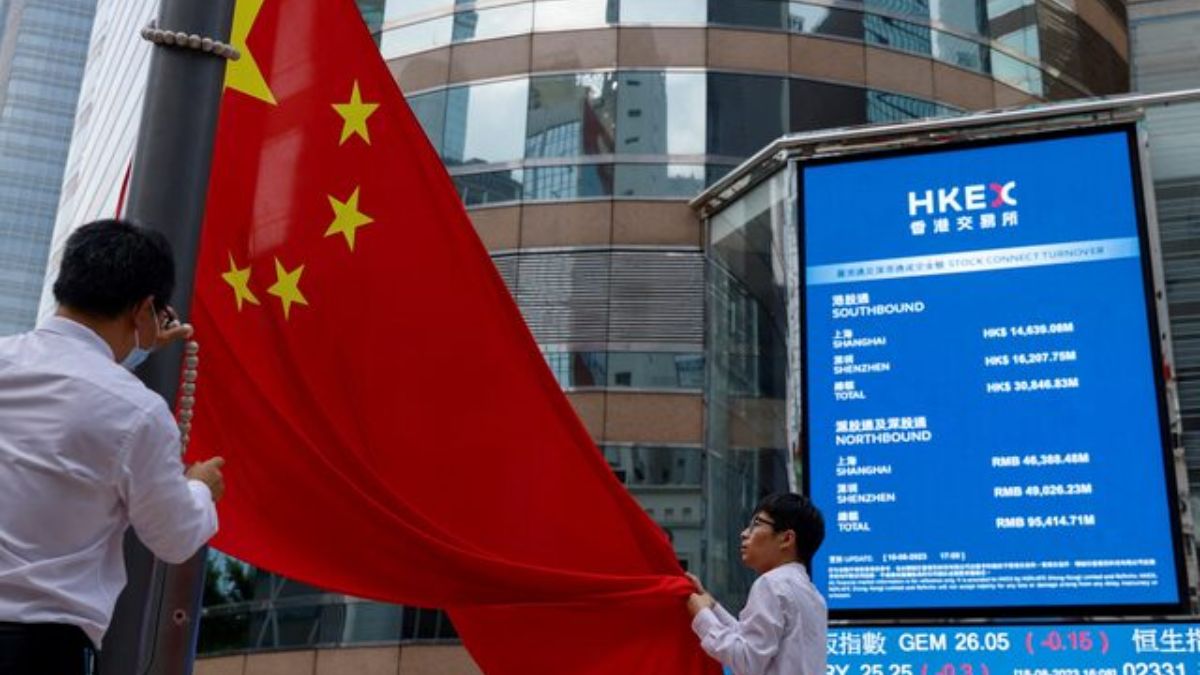China’s economy continued to show signs of fragility in August 2025 as a combination of subdued consumer demand, slowing exports and ongoing property market woes weighed on growth indicators. Official figures released by the National Bureau of Statistics (NBS) suggested that while the economy was still expanding, momentum had weakened across several key sectors, prompting policymakers to weigh fresh measures to stimulate demand.
Are Chinese not buying enough?
Retail sales, a critical gauge of domestic consumption, grew by 3.4 per cent year on year in August, falling short of both the 3.82 per cent forecast by financial data provider Wind and the 3.9 per cent predicted by analysts surveyed by the Financial Times. The figure also represented a slowdown from July’s 3.7 per cent increase raising concerns about the durability of consumer spending.
Officials in Beijing have placed renewed emphasis on boosting household consumption this year as the country seeks to rebalance growth away from exports and heavy industry. However, the government’s flagship trade-in programme for household appliances and other goods has been hindered by funding shortages.
Several provinces reportedly suspended subsidies for certain products after exhausting their budgets forcing Beijing to promise additional financial support, including a year-long plan to subsidise interest on personal consumer loans, South China Morning Post reported.
Premier Li Qiang, in remarks at a cabinet meeting in August, reportedly urged policymakers to accelerate service-sector consumption and remove restrictions that dampened household spending. Yet despite these pledges, the August data suggested households remained cautious weighed down by uncertainty in employment and housing markets.
What’s happening in Chinese factories?
Industrial output also underperformed expectations expanding by 5.2 per cent in August compared with the same month a year earlier. The figure marked a deceleration from July’s 5.7 per cent growth and undershot Wind’s 5.75 per cent estimate. The Financial Times noted that this was the weakest pace of industrial expansion since November 2024.
Analysts suggested that industrial activity faced dual pressures. Moody’s Analytics pointed to tighter government oversight of industrial overcapacity and the fading boost from export frontloading ahead of US tariff hikes as key reasons for the slowdown.
How is China’s export sector doing?
China’s export performance reinforced these concerns. The temporary respite provided by trade truces with Washington appeared to be diminishing, with Chinese exports to the United States plunging by more than 33 per cent in August, even as shipments to other markets rose, South China Morning Post reported.
Exporters had rushed to send goods earlier in the year to pre-empt tariffs imposed under President Donald Trump’s administration, some of which reached as high as 145 per cent. Despite ongoing negotiations — including a fourth round of talks between US Treasury Secretary Scott Bessent and Chinese Vice-Premier He Lifeng in Madrid in mid-September — uncertainty over the trade outlook remained a drag on business confidence.
Is China’s real estate still not out of the woods?
Investment indicators further highlighted the fragility of China’s recovery. National fixed-asset investment rose only 0.5 per cent in the first eight months of the year, well below Wind’s forecast of 1.29 per cent and a sharp slowdown from the 1.6 per cent rise in the January–July period.
The property sector, once a pillar of growth, remained in deep contraction. Property investment fell by 12.9 per cent year on year from January to August, worsening from a 12 per cent drop in the first seven months. Meanwhile, new home sales by floor area fell 4.7 per cent in the same period, after a 4 per cent decline earlier in the year.
Although authorities in major cities such as Beijing, Shanghai and Shenzhen relaxed restrictions on home purchases in recent months, the measures did little to reverse the downward trend. The Financial Times added that house prices fell by 2.5 per cent in August compared with a year earlier, only a modest improvement from July’s 2.8 per cent decline.
Yuhan Zhang, an economist at The Conference Board’s China Center told Financial Times that short-term price movements in materials such as cement and steel suggested continuing pressure on the real estate sector, arguing that stronger consumer confidence in jobs and income would be required for meaningful price stabilisation.
Why is China unable to tame unemployment?
Labour market data added to the sense of unease. The urban unemployment rate rose to 5.3 per cent in August, up slightly from 5.2 per cent in July. Analysts argued that persistent job insecurity was contributing to weak household spending reinforcing the challenges facing policymakers.
Producer prices also reflected the deflationary risks facing Chinese industry. Official data showed that producer prices dropped by 2.9 per cent in August extending a decline that has persisted since October 2022.
Beijing has attempted to combat these trends by encouraging consolidation in industries struggling with overcapacity and intense price competition, a policy described in Communist Party jargon as combating “involution.” Yet some observers warned that such measures could further depress investment if factory closures outweighed efficiency gains.
What is Chinese government up to?
NBS spokesperson Fu Linghui described the economy in August as “generally stable,” but he acknowledged that China faced “many unstable and uncertain factors in the external environment” and was “confronted with multiple risks and challenges”. He emphasised the need to implement macro policies fully and maintain stability in employment, businesses and market expectations, while deepening reform and innovation.
Despite mounting pressures, some analysts doubted whether Beijing would embark on large-scale stimulus in the near term. Zhang of Pinpoint Asset Management argued that policymakers were likely to hold off on significant policy shifts until after third-quarter GDP data was released in October.
He added that fiscal policy could become slightly more supportive but suggested a major stimulus package would only be considered if China’s 5 per cent growth target appeared unattainable.
Balancing risks amid uncertainty: China has a tough task at hand
The August data painted a picture of an economy grappling with simultaneous domestic and external headwinds. Weak consumption, a sluggish property market, rising unemployment and deflationary industrial conditions have combined with US trade tensions to constrain growth. While officials reiterated their commitment to stabilising markets and fostering long-term reform, the near-term challenge of reviving confidence among consumers and businesses loomed large.
Unless households began to feel more secure about jobs and incomes and unless trade negotiations with Washington yielded more certainty, Beijing’s efforts to nudge growth through targeted subsidies and regulatory adjustments might prove insufficient. With third-quarter GDP data due in October, policymakers were expected to face a delicate balancing act between avoiding excessive stimulus and preventing the economy from sliding further off track.
End of Article

)
)
